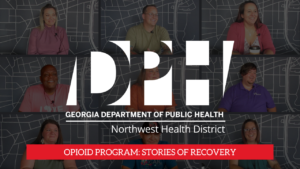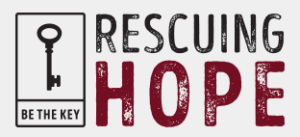Lead and Healthy Homes
Overview:-
The Georgia Department of Public Health’s Healthy Homes and Lead Poisoning Prevention Program (GHHLPPP) is committed to safeguarding families from lead hazards. Aligned with Healthy People 2030 goals, the program strives to eliminate childhood lead poisoning in Georgia. Focused on homes predating 1978 and economically vulnerable areas, the program prioritizes primary prevention, systematically removing lead hazards. It advocates for regular blood lead tests for at-risk children, enabling swift interventions. Through community education, the program emphasizes creating lead-safe environments, dietary adjustments, and provides follow-up services. Harnessing DPH resources and aligning with CDC guidelines (https://www.cdc.gov/nceh/lead/default.htm), this initiative is committed to proactively addressing childhood lead poisoning, safeguarding the health of vulnerable populations and fostering long-term well-being.
Sources of Lead Exposure: –
- Lead-Based Paint: Homes built before 1978 may have lead-based paint. When it deteriorates, it creates lead dust.
- Risk: Children may ingest lead by putting contaminated objects or hands in their mouths. Renovation or deterioration of materials can release lead, increasing exposure.
- Water Pipes: Lead can leach into tap water from plumbing with lead pipes or lead solder.
- Risk: Drinking or using contaminated water can lead to lead exposure.
- Consumer Products: Some toys, jewelry, or imported goods may contain lead.
- Risk: Children can be exposed by playing with or putting these items in their mouths.
- Soil Contamination: Soil near lead industries, or in urban areas may contain lead particles.
- Risk: Children playing in or ingesting soil can be exposed to lead.
- Occupational Exposure: Adults working in lead-related industries may bring lead home on clothes or skin.
- Risk: Family members, especially children, may be exposed to lead dust.
- Certain Foods and Products: Some imported candies, traditional medicines, or foods stored in lead-containing containers.
- Risk: Ingesting these items can contribute to lead exposure.
- Hobbies and Crafts: Activities like stained glass work or pottery using lead-based materials.
- Risk: Lead dust or residue from these hobbies can pose a risk if not handled carefully.
Effects of Childhood Lead Poisoning: –
- Brain and Nervous System Damage: Lead exposure in childhood can cause irreversible damage to the developing brain and nervous system.
- Cognitive Impairment: Children with lead poisoning may experience learning disabilities, memory deficits, and a decrease in overall cognitive function.
- Behavioral Problems: Lead toxicity is linked to increased risk of behavioral issues, including attention deficits, hyperactivity, and impulsivity.
- Speech and Hearing Difficulties: Lead poisoning can contribute to speech and hearing impairments, affecting a child’s communication abilities.
- Growth and Development Delays: Lead adversely affects physical growth, leading to developmental delays in motor skills and coordination.
- Long-term Consequences: Even low levels of lead exposure can result in permanent, long-term consequences, impacting academic achievement and future opportunities for affected individuals.
How to prevent childhood lead poisoning: –
Preventing childhood lead poisoning involves a multifaceted approach. Regular blood lead level tests are crucial, especially for at-risk children. Identifying and addressing lead hazards in homes, schools, and play areas is essential to creating safe environments. Additionally, promoting healthy diets rich in iron and calcium can help mitigate lead absorption. Encouraging hygiene practices, such as frequent handwashing, is effective in reducing lead dust ingestion. When conducting renovations in older homes, it’s imperative to use certified professionals who follow lead-safe protocols. Public education plays a pivotal role in raising awareness, promoting early testing, and fostering community engagement for a lead-free future.
Detection and treatment childhood lead poisoning: –
Detecting and treating involves regular blood lead level tests, especially for at-risk children. Early identification is key, allowing prompt intervention to minimize long-term effects. Healthcare providers use capillary or venous blood draws, confirming elevated lead levels promptly. Treatment strategies may include environmental hazard mitigation, emphasizing lead-safe practices. Collaborative efforts between healthcare professionals, parents, and public health initiatives play a crucial role in preventing, detecting, and treating childhood lead poisoning, ensuring the well-being of the child and promoting a lead-free environment.
Informational Flyer – Lead Free Is The Way To Be
District Lead Coordinator contact information: –
Karthiga Vasudevan MPH
Email: Karthiga.Vasudevan@dph.ga.gov
Contact in your Local Environmental Health Office: –
Reach out to your health department if you have any questions or concerns!
https://nwgapublichealth.org/counties/
DPH Video – Reduce the Risk: Preventing Childhood Lead Poisoning in Georgia
For more information visit:
https://dph.georgia.gov/environmental-health/healthy-homes-and-lead-poisoning-prevention
Related Sites:
Centers for Disease Control and Prevention (CDC)
Consumer Product Safety Commission (CPSC)
Department of Housing and Urban Development (HUD)
Department of Natural Resources (GA)
Environmental Protection Agency (EPA)
GA Poison Control Center
 Quickly find and check the scores for restaurants in our area.
Quickly find and check the scores for restaurants in our area.


 Are you or someone you know being forced to work for little or no pay and cannot leave?
Are you or someone you know being forced to work for little or no pay and cannot leave?